We know–from the museums and events that celebrate old Annapolis–that the city of Annapolis has great history as an important port. However, so often, the areas outside of Annapolis are not as celebrated for their history as they should be. Plenty of history pervades the other cities around Annapolis and today, we are going to discover more about Pasadena. More specifically, Hancock’s Resolution in Pasadena, a little over thirty minutes from Annapolis. This piece of land praises its past with year-round events, tours, and more, and in turn, invites you to join in sharing its history. What you’ll find below is a condensed version of what you’ll learn when you visit, along with pictures of life from centuries ago.
As retold by volunteers at Hancock’s Resolution (dressed appropriately for their roles as men and women of the 18th/19th century), the land on which present-day Hancock’s Resolution sits was once inhabited by Indians. The land was fertile and the water (we now know as Bodkin Creek and the Patapsco River) was close enough to fish and travel in. John Smith even traveled past the area, but neither Smith nor the Native Americans would be the final owners of the property. In the early 18th century, William Hancock took over the property and when Hancock’s son, coincidentally also named William Hancock, became old enough, he took over the property. However, legal battles over the land ensued and thirty years after Hancock Sr. came to the land, a man by the name of Thomas Jennings won ownership.
The land was restored to a Hancock when Stephen Hancock Sr. purchased acreage from Jennings and finally, established a strong Hancock presence on the land. Stephen’s son, Stephen Jr., assumed the property in 1785 and built the stone house visitors travel through on tours. It was also Stephen Jr. who gave the land its name we know today: Hancock’s Resolution. In the backyard, you can barely make out the headstones for Stephen Jr. and his wife, who died at the start of the 19th century.
After Stephen Jr. came Francis, John, and Henry Alfred Hancock, all of whom had a piece of the Hancock property until they passed and their land was given to the next Hancock in line. The owner in the mid-1800s was Henry Alfred, who added the white building attached to the house. Fast forward from more passing of the land to 1958, when a woman, Rhoda Virginia Hancock Cook, recognized the need to preserve the family history and land. Thus, the stone house and fourteen acres were turned over to Annapolis Historic Society to preserve. In 1975, after some years of vacancy, Hancock’s Resolution found itself a place on the list of the Department of Interior’s “National Register of Historic Places.” The little house that belonged to Rhoda Virginia and her husband was moved to Hancock’s Resolution to both preserve more of the family history and to function as a caretaker’s house.
Since 1999, the property has been open for the public and thankfully restored via grants and efforts by volunteers at the Friends of Hancock’s Resolution (FOHC). Now, anyone can enjoy a peek into life on a 19th century farm. Events happen quite frequently at the farm, and because the property is for historic use, many of the events are free. Some upcoming ones to be aware of include the Father’s Day musket firing demo on June 16, the lecture about John Smith’s discovery near Hancock’s Resolution on June 23, and the patriotic activities planned on June 30. Hancock’s runs events similar to these April through October.
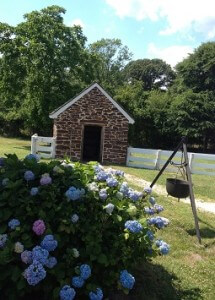
Aside from the store, several other important features stand outside the family house. The garden (in a picture above), protected by a white fence today, is significant because it acts as a reminder of what life was for generations of Hancocks. As the volunteers at Hancock’s relayed, many of the Hancocks were produce farmers who sold their goods via water and later, sold them on trucks traveling to bigger cities. The Hancocks grew a multitude of crops as their income, and the garden with produce and plants acts as a symbol of what life was. Another place the Hancocks grew their produce was on the front lawn, in front of the farm house. In the spring, you can witness plowing day, where a volunteer uses a horse and mule to plow the land for better crops. During this spring plowing in mid-May, the house is open for tours.
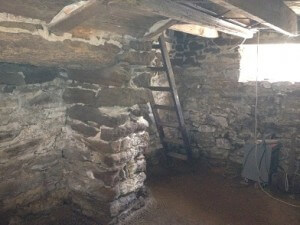
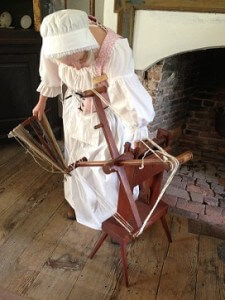
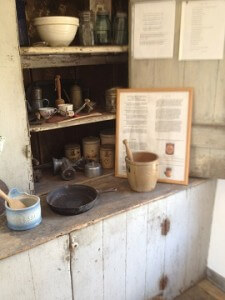
With the fast-paced world of technology, WiFi, and business, it’s a pleasure to escape for a while to the world of years ago. Life was simple, albeit hard. Visiting Hancock’s reminds you that yes, we have made marvelous advancements (like indoor plumbing), but that we must not forget the history of the area and people around us. Take some time to visit the past at Hancock’s. Pictures are allowed, most everything is free, and the tour guides are kind and informative. Sometimes revisiting the past allows you to appreciate the present even more.
Visit www.historichancocksresolution.org to learn more about this property, see photos, and get directions.


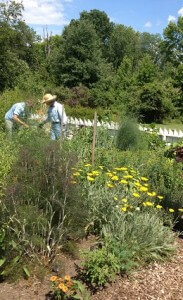





Leave A Comment